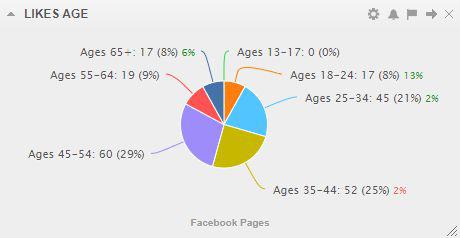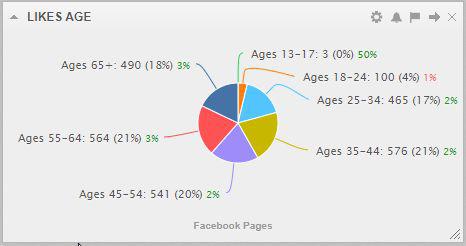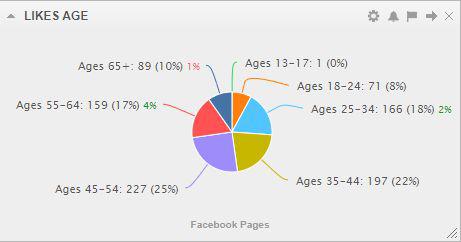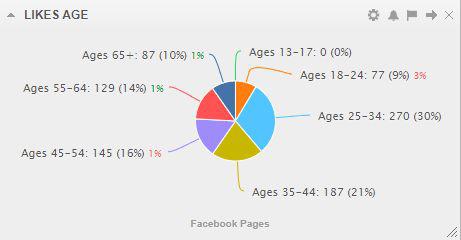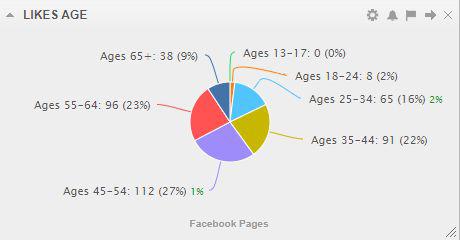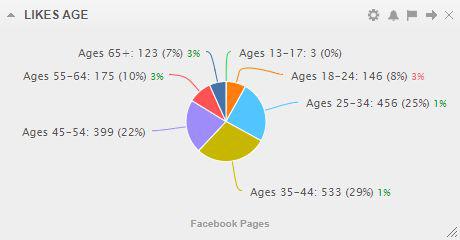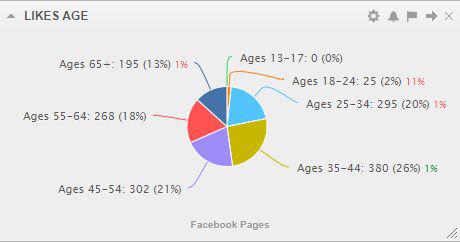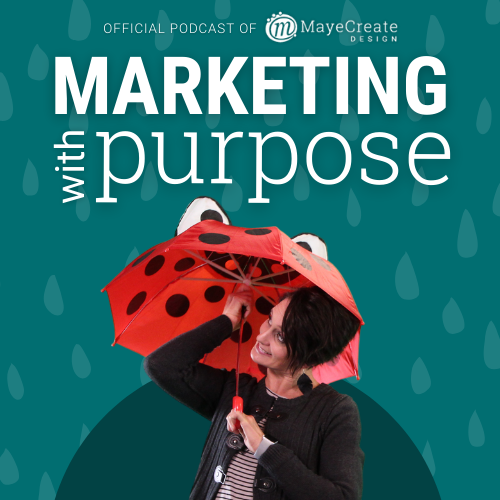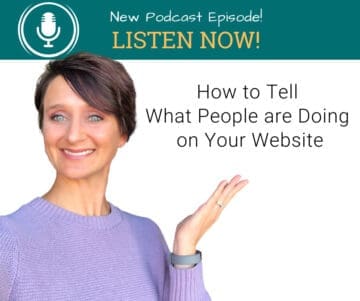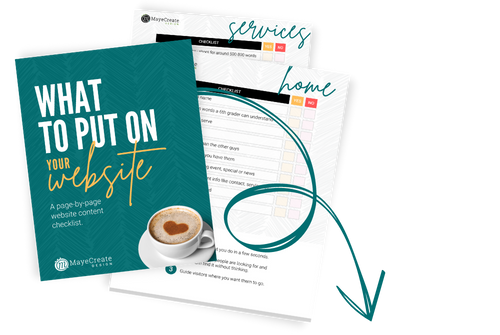How to Kick Start Your Social Media Marketing Campaign
June 24, 2019
CONSUME CREATIVELY
This content is available in:
This content is available in:
TEXT

Congratulations! You’ve decided you’re ready to take the plunge into social media marketing, and figured out what you hope to accomplish when investing your most precious resource — time — into it.
Now you’re wondering: “Where do I start?”
We hear you. With so many networks and strategies out there it seems like there are endless destinations, side roads and pit stops — but not a road map in sight! This past year when evaluating our own social media strategy, MayeCreate went back to basics, utilizing our own social media playbook to devise a social media plan based on the basics — and we’re here to share that with you now — so you can learn from our past mistakes!
1. When in doubt start with Facebook.
After we establish “why use social media for business” people want to know .where to start posting. That’s a bit tricky to answer without knowing all the details (i.e. your goals), but in general follow this rule: When in doubt go with the giant. I’m not referring to the jolly green one — we’re talking Facebook.
Why start your social media with Facebook?
- Facebook is the most-widely used of the major social media platforms.
- As of 2018 68% of adult internet users use Facebook.
- Some claim its user base is most broadly representative of the population as a whole.
- Facebook content consumption has increased 57% over the past two years.
Simple enough, but make sure you set up a Facebook Business page for your company or organization.
2. Use the buddy system.
Sheer volume of users alone can convince you to jump on the Facebook bandwagon. Here’s the deal though: if you’re thinking towards the future — which is always a good idea — you shouldn’t put all your social media eggs in one basket. We currently see steady growth for our clients on Facebook but it’s not nearly as rapid as it was even a year ago.
Generally speaking, we find Baby Boomers and Generation X are more active Facebook users than many Millennials and younger generations, who are interacting on Facebook less and adopting other networks such as Snapchat and Instagram more. With this in mind, the Facebook-only social media approach maybe a winning proposition for today, but it may also completely hose you tomorrow. Even if Millennials are not currently your target audience they will be in the future. If you need to connect with them in say, 5 years, start building your following on the networks they’re on now so you’ll be much more likely to reach them later. It may be a leap to suggest Millenials will still be on Instagram in five years, but it’s probably an even bolder leap to suggest that they will somehow make their way back to Facebook during that time. The bottom line is that no matter who you intend to target, you will need to push your message out to multiple networks to get your foot in the door and stay competitive for the long run.
Sampling of social media age demographics from our client’s pages:
- Baby Boomers (Red & Dark Blue)
- Generation X (Purple & Gold)
- Millennials (Light Blue & Orange)
Scroll through slides to view age demographic sampling.
You don’t have to reinvent your message for each network. You can use the digital marketing strategy reach and recycle concept — recycling the same message across multiple networks. Note: not all your posts will perform equally on all social media outlets. Your following may be a different demographic on each network so they’ll respond to your content differently. We suggest tailoring your pitch for each network to resonate best with your followers, but that doesn’t mean you have to totally recreate the wheel. Just spin your message to each following’s values for best results.

3. Don’t be discouraged as you branch into new networks for business social media!
As you dive into utilizing new networks don’t become discouraged if you’re comparing data from one network to another. Each network has its own pros and cons when distributing content.
- Facebook, while supersaturated, allows you to link to content outside the network, thus visitors can click on posts and visit your website. This means you’ll see more visitors to your website from Facebook.
- Instagram is a much more contained environment that doesn’t allow people to easily click on content leading to external sources. They have to go to your profile and click from there. Instagram users tend to interact more with content but you won’t see as many visitors from Instagram to your website because of the barrier of entry.
- Twitter‘s algorithm moves the news feed along faster than the other major networks so you have to post more often to stay in front of your viewers. It’s algorithm weighs time more heavily when deciding whether or not show your content to others, you may have to make more posts to get the same engagement as on Facebook or Instagram. Twitter also allows you to link to content outside the network so you’ll also see more visitors to your website from Twitter.
Keep in mind the metrics with which you will use to determine the success of your social campaign will differ from network to network, because the social networks’ constraints are different, and so is your audience.
4. Post on LinkedIn for B2B
LinkedIn has a far higher ratio of college grads and persons making over $75,000 than the other networks, followed closely by Twitter — and it’s not as highly saturated with content as Facebook.
LinkedIn can be a really effective tool to leverage, you’ve been connecting with people all these years on LinkedIn, now’s the time to cash in those connections! It’s amazing how many companies are straight-up killing it on LinkedIn. But starting out on LinkedIn isn’t easy. Most of our clients use LinkedIn as an auxiliary, supplementary or experimental network. The good news? LinkedIn is very robust offering a multitude of facets and ways to connect with people, and without the constant torrent of content being continuously published to the network, your posts and updates have a significantly higher chance of being seen by your target demographic.
5. Decide how much to post.
When determining how to start social media marketing you should be considering the time investment it will take to get it up and running and keep it that way. Without getting too far into the weeds here, you will need to know how much you will need to post to have the best chance at success on a given network. Knowing how much you’ll need to post on a given network can help people make a decision about whether or not to join up in the first place. Suggested post frequency varies per network:*
- Facebook: 3 – 10 posts/week
- LinkedIn: 5 posts per week, 20 total/mo
- Instagram: varies, consistency is key
- Twitter: 5 – 7 tweets/day
- Pinterest: 11 pins/day
Twitter and Pinterest can certainly seem un-doable when you look at the suggested number of posts. However, not all of those posts cover new topics and not all of them are content curated by you. You can post about the same topic more than once on Twitter and as many as 30% of the posts you make on the network may be re-tweets or sharing other people’s content that could be relevant to your viewers. Which, yes, is time consuming but isn’t nearly as much of a burden as writing it from scratch! While on Pinterest you will not likely post on the same topic more than a few times (with fancy cover images focusing on different product benefits) you will do the majority of your posting to other people’s content.
[cta_left id=”19″]
6. ALWAYS allocate $ to promote your content.
For all networks, set aside budget to boost posts or run ads. This will grow your audience and spread your message faster, none of the networks technically favor businesses.
Try the fake it till you make it strategy.
If you’re just starting out with social media marketing, one good strategy is to do less posts and boost/run ads for the posts you have. It’s the fake it till you make it strategy. This generally results in page likes/follows, and increased engagement. You buy your friends so you look cooler than you are. People think “wow all those people commented on this, the company must be legit!” Plus it has the potential to help show your future posts to more people because the algorithm thinks they like you too. Don’t get us wrong, it’s not like you’re buying your prom date. Not like that at all, people still have to CHOOSE to click on your content. It’s like you cleaned under your nails, bought a new suit and rented a limo to drive to the dance so you date is more likely to make out with you when you get there. (Did that analogy get a little out of control? We don’t think so…)
Facebook Supply and Demand = Higher Ad Costs and Less Exposure
Over the past year we’ve seen advertising costs increase on Facebook but the number of people that actually see organic posts (the ones we’re not paying to promote) have decreased. It’s pretty much a basic supply and demand problem. As Facebook proves its worth as a networking and advertising outlet more businesses jump on and the demand for ad space goes up. Unfortunately, the people who are on Facebook are less than enthused about seeing the advertisements in their already busy feeds. Facebook has to keep the users happy or they’ll be out of business and as a result the supply for ad space is down, making ads more expensive.
Instagram, Snapchat and LinkedIn are not as densely populated, leaving room for advertisers and brands to get in front of their audiences without quite as much competition. Pricing structure, targeting and opportunities vary for each network. Don’t get scared away from Facebook, just recognize the advantages of utilizing more than one network — both to reach more people and create a more stable social media plan for the future.
Take LinkedIn for example. It has some of the most targeted advertising possibilities out there. The ads aren’t super cheap (relative to other networks), they start at $10 per day, but they’re VERY targeted. If you have a product or service that is highly specialized and only used by a particular industry with a decision maker that has a specific title, you can show ads to just those people on LinkedIn. Good luck finding that opportunity anywhere else.
Still wondering how to start social media marketing?
As you’re go forth on your social media expedition if you take nothing else away from this article remember these three things:
- If in doubt start with Facebook and B2B businesses should do LinkedIn too.
- Use the buddy system to future proof your social media plan and stay in front of key buying demographics as they age.
- Set aside money for ads or promoting content. Social media networks are in business to make money and every year it gets more difficult to show your business’s posts for free.
We have quite a few articles covering similar topics like digital marketing strategies, why use social media for business and tons of posts covering the fundamentals of Facebook, and other social media how-to’s. Take a look or head on over to our resources section to download a free in depth guide on the topic of your choice.
Who Manifested This Madness?

This fabulous human, that's who.
Monica Maye Pitts
Monica is the creative force and founder of MayeCreate. She has a Bachelor of Science in Agriculture with an emphasis in Economics, Education and Plant Science from the University of Missouri. Monica possesses a rare combination of design savvy and technological know-how. Her clients know this quite well. Her passion for making friends and helping businesses grow gives her the skills she needs to make sure that each client, or friend, gets the attention and service he or she deserves.

